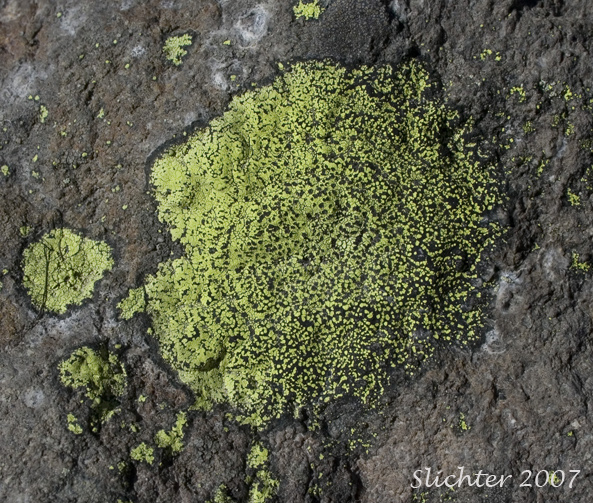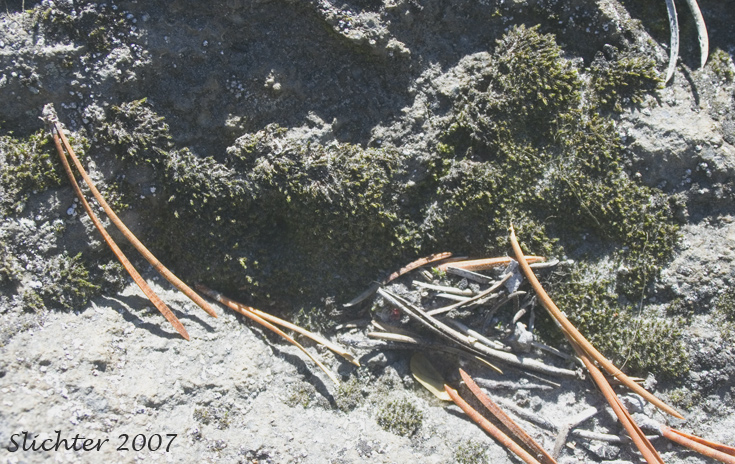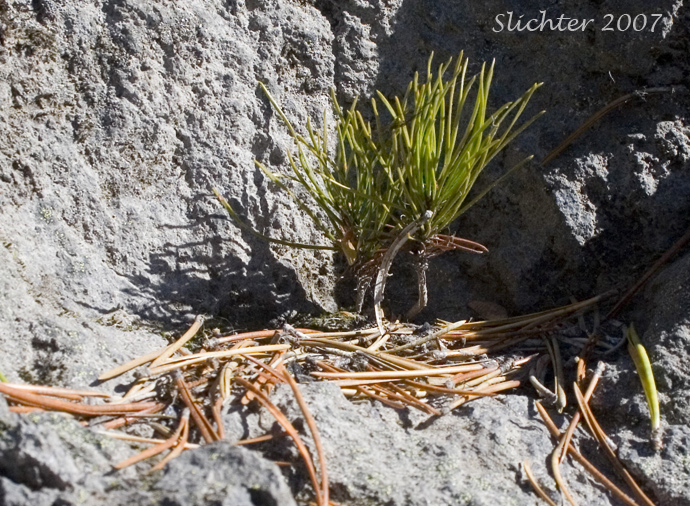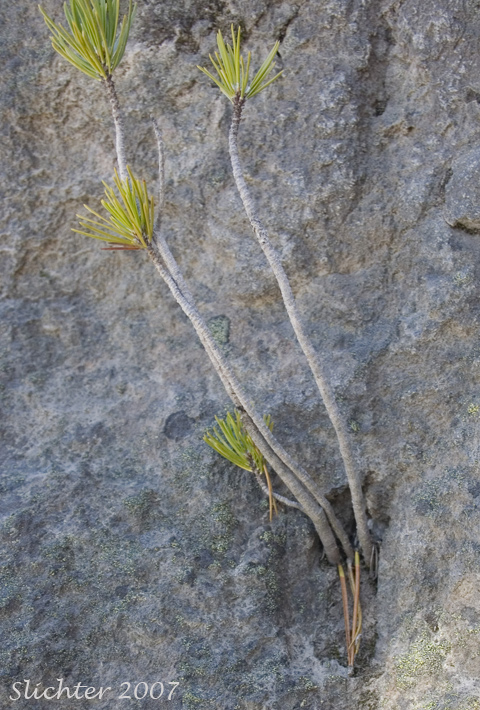

Obviously, on bare rock, no develop soil exists. The niche of the lichen (mutualistic relationship between algae and fungi) is to live on the rock where it releases carbon dioxide, which when mixed in rainwater, makes a weak acid (carbonic acid). The acid begins breaking the rock into small grit-sized pieces which wash down into depressions or cracks in the rock.


As a little bit of grit forms a small amount of soil in cracks and depressions in the rock, mosses begin to take hold on the rock. As the mosses begin to die, they decay with the dead organic matter held within the mass of moss, slowly increasing the depth of the soil. Additions of pine needles and leaves further deepen the soil.


When enough decay adds enough depth of soil to a crack or depression in the rock, the seeds of small shrubs or trees may blow in (or be planted by rodents or birds) and sprout. These young sprouts of lodgepole pine have sprouted in a hole in the rock with less than 3 cm or soil in it.

